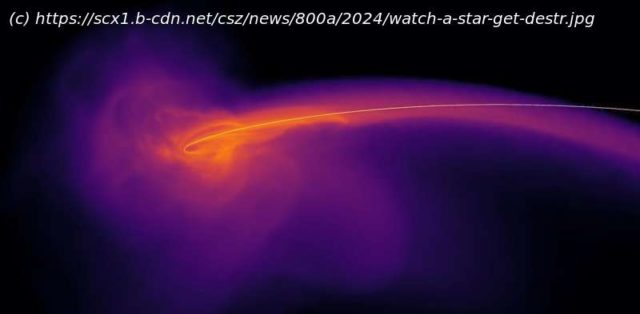Giant black holes in the centers of galaxies like our own Milky Way are known to occasionally munch on nearby stars.
Giant black holes in the centers of galaxies like our own Milky Way are known to occasionally munch on nearby stars.
This leads to a dramatic and complex process as the star plunging towards the supermassive black hole is spaghettified and torn to shreds. The resulting fireworks are known as a tidal disruption event.
In a new study published today in The Astrophysical Journal Letters, we have produced the most detailed simulations to date of how this process evolves over the span of a year.
American astronomer Jack G. Hills and British astronomer Martin Rees first theorized about tidal disruption events in the 1970s and 80s. Rees’s theory predicted that half of the debris from the star would remain bound to the black hole, colliding with itself to form a hot, luminous swirl of matter known as an accretion disk. The disk would be so hot, it should radiate a copious amount of X-rays.
But to everyone’s surprise, most of the more than 100 candidate tidal disruption events discovered to date have been found to glow mainly at visible wavelengths, not X-rays. The observed temperatures in the debris are a mere 10,000 degrees Celsius. That’s like the surface of a moderately warm star, not the millions of degrees expected from hot gas around a supermassive black hole.
Even weirder is the inferred size of the glowing material around the black hole: several times larger than our solar system and expanding rapidly away from the black hole at a few percent of the speed of light.






